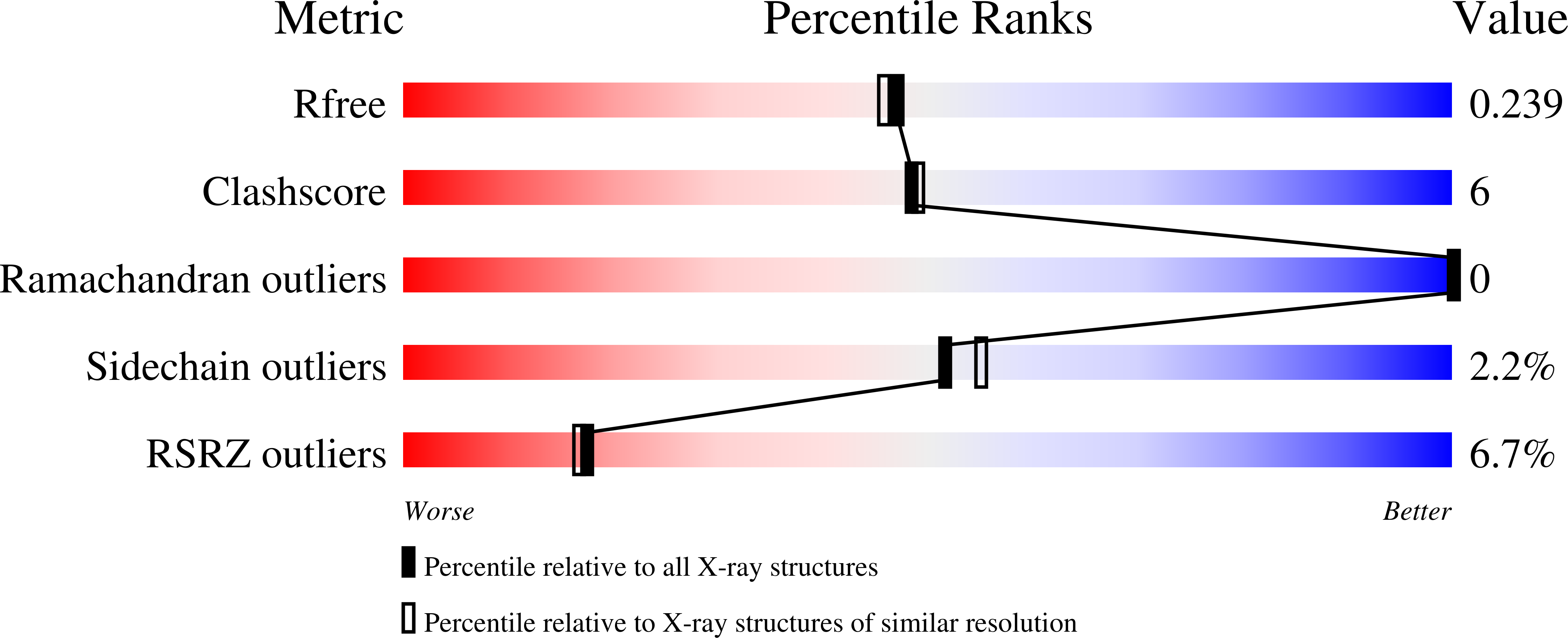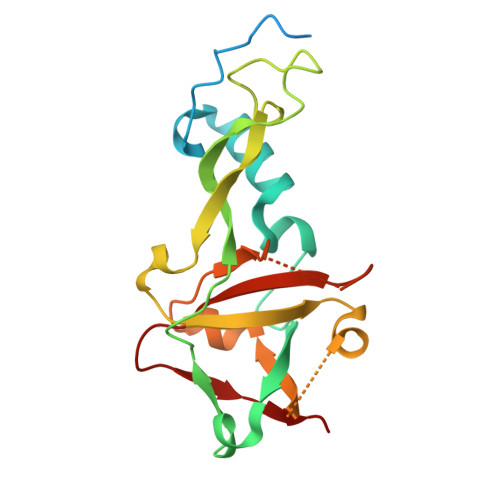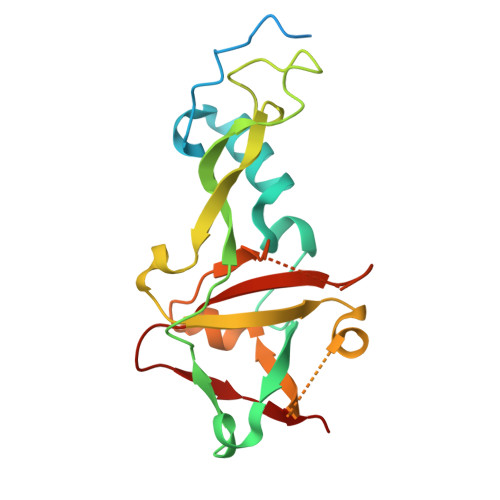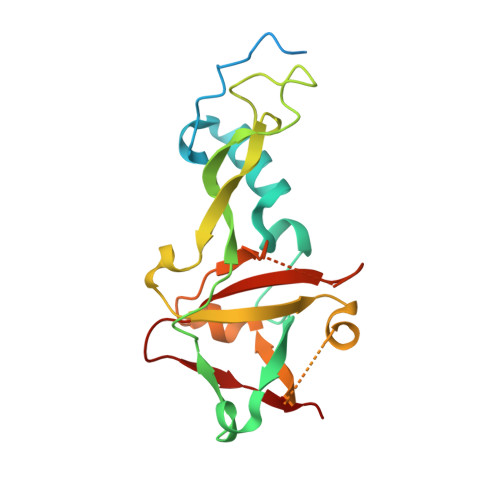Crystal Structures of the Type III Effector Protein AvrPphF and Its Chaperone Reveal Residues Required for Plant Pathogenesis
Singer, A.U., Desveaux, D., Betts, L., Chang, J.H., Nimchuk, Z., Grant, S.R., Dangl, J.K., Sondek, J.(2004) Structure 12: 1669-1681
- PubMed: 15341731
- DOI: https://doi.org/10.1016/j.str.2004.06.023
- Primary Citation of Related Structures:
1S21, 1S28 - PubMed Abstract:
The avrPphF locus from Pseudomonas syringae pv. phaseolicola, the causative agent of bean halo-blight disease, encodes proteins which either enhance virulence on susceptible hosts or elicit defense responses on hosts carrying the R1 resistance gene. Here we present the crystal structures of the two proteins from the avrPphF operon. The structure of AvrPphF ORF1 is strikingly reminiscent of type III chaperones from bacterial pathogens of animals, indicating structural conservation of these specialized chaperones, despite high sequence divergence. The AvrPphF ORF2 effector adopts a novel "mushroom"-like structure containing "head" and "stalk" subdomains. The head subdomain possesses limited structural homology to the catalytic domain of bacterial ADP-ribosyltransferases (ADP-RTs), though no ADP-RT activity was detected for AvrPphF ORF2 in standard assays. Nonetheless, this structural similarity identified two clusters of conserved surface-exposed residues important for both virulence mediated by AvrPphF ORF2 and recognition of this effector by bean plants expressing the R1 resistance gene.
Organizational Affiliation:
Department of Pharmacology, University of North Carolina at Chapel Hill, 27599, USA.
















